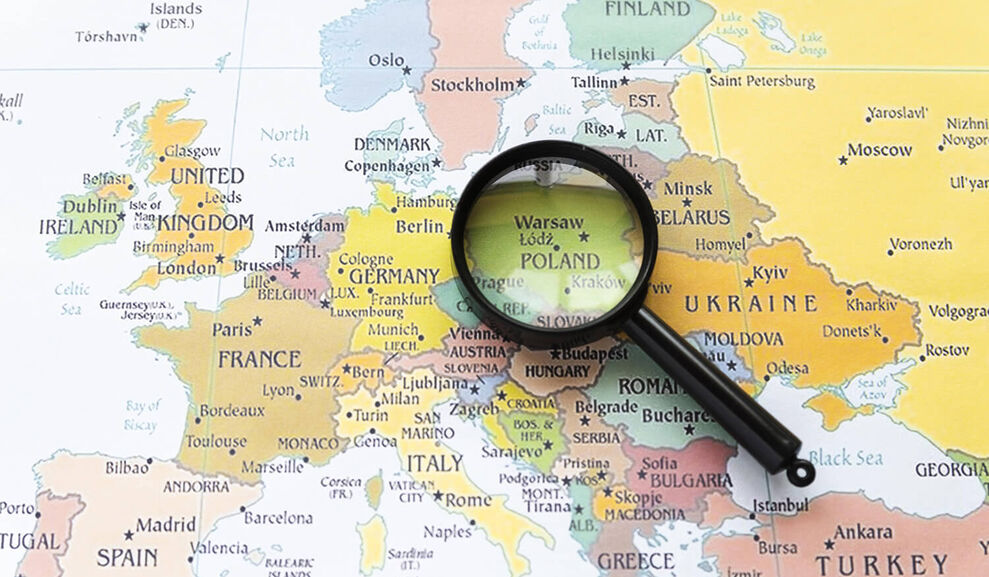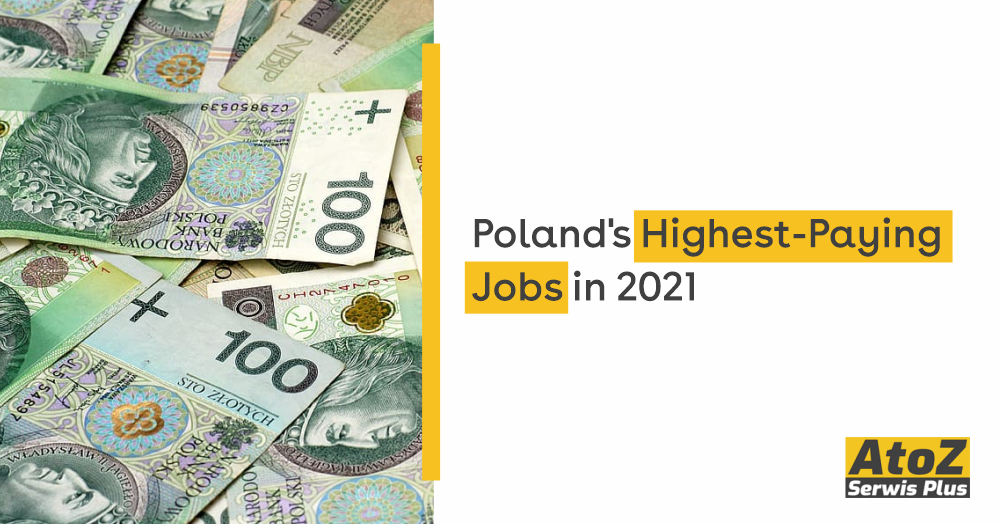

What Will the Minimum Wage Be in Serbia in 2025?
What might your paycheck look like in 2025? For many workers in Serbia, the minimum wage is a crucial factor in their financial well-being. As we approach the mid-2020s, speculation about the future of Serbia's minimum wage is growing, leaving employees and employers eager for insights.
The current minimum wage in Serbia has been a heated debate, with recent increases aimed at improving living standards. But what does the future hold? Will economic growth, government policies, and global trends increase the minimum wage, or will challenges keep it stagnant? Understanding the potential trajectory of Serbia's minimum wage is not just about numbers—it's about the lives and livelihoods of thousands of workers across the country.
This blog post will explore the factors shaping Serbia's 2025 minimum wage. We'll explore the key elements influencing this critical figure, from current economic conditions to expert predictions. Join us as we unpack the complexities of Serbia's labour market and peek into the crystal ball of wage forecasts.
Current Minimum Wage Situation in Serbia
A. Overview of the present minimum wage
The current minimum wage in Serbia is 40,022 Serbian Dinars (RSD) per month, approximately €341 or $370 as of 2023. This rate applies to full-time workers based on a 40-hour workweek. For part-time workers, the minimum wage is calculated proportionally.
B. Factors influencing the current rate
Several factors have contributed to the determination of Serbia's current minimum wage:
- Economic growth
- Inflation rates
- Labor market conditions
- Government policies
- Collective bargaining agreements
|
Factor |
Impact on Minimum Wage |
|---|---|
|
Economic growth |
Positive correlation |
|
Inflation |
Necessitates adjustments |
|
Labor market |
Reflects supply and demand |
|
Government policies |
Direct influence |
|
Collective bargaining |
Negotiated increases |
C. Comparison with neighbouring countries
Serbia's minimum wage is competitive within the region but still lags behind some EU member states:
- Bulgaria: €399
- Romania: €606
- Hungary: €579
- Croatia: €700
D. Impact on Serbian workers and economy
The current minimum wage in Serbia has several effects:
- Provides a bare income floor for low-skilled workers
- Helps reduce income inequality
- Stimulates consumer spending
- May impact job creation in some sectors
- Influences Serbia's competitiveness in the global market
While the minimum wage protects workers, its impact on the broader economy remains a topic of ongoing debate among policymakers and economists.
Projected Economic Trends for Serbia
GDP growth forecasts
Serbia's economic trajectory is showing promising signs for the coming years. According to recent projections, the country's GDP growth is expected to maintain a steady upward trend:
|
Year |
Projected GDP Growth |
|---|---|
|
2023 |
2.5% |
|
2024 |
3.0% |
|
2025 |
3.5% |
These forecasts suggest gradually strengthening the Serbian economy, positively influencing wage growth.
Inflation expectations
Inflation is a crucial factor in determining real wage growth. Analysts predict that Serbia will experience:
- Moderate inflation rates between 3-4% annually
- Gradual stabilisation of prices
- Improved purchasing power for citizens
Labor market predictions
The Serbian labour market is expected to evolve in the following ways:
- Unemployment rate projected to decrease to 9% by 2025
- Increased demand for skilled workers in IT and manufacturing sectors
- Growing emphasis on vocational training and reskilling programs
Foreign investment outlook
Serbia continues to attract foreign investors, which could impact wage levels:
- Projected 5-7% annual increase in Foreign Direct Investment (FDI)
- Focus on high-value industries like automotive and technology
- Potential for wage competition to attract and retain skilled workers
Potential EU accession impact
Serbia's ongoing negotiations for EU membership could significantly influence its economic landscape:
- Accelerated reforms to meet EU standards
- Increased access to EU markets and funding
- Potential for wage convergence with EU averages in the long term
These economic trends collectively suggest a positive outlook for Serbia's minimum wage in 2025, though the exact figure will depend on how these factors interact and materialise over the coming years.
Government Policies and Initiatives
A. Planned minimum wage increases
The Serbian government has outlined planned minimum wage increases leading up to 2025. These incremental raises aim to improve living standards for low-income workers while maintaining economic stability. Here's a breakdown of the projected increases:
|
Year |
Projected Minimum Wage (RSD) |
Percentage Increase |
|---|---|---|
|
2023 |
40,022 |
Base year |
|
2024 |
43,224 |
8% |
|
2025 |
46,682 |
8% |
B. Labor law reforms
To support the minimum wage increases, the government is implementing several labour law reforms:
- Strengthening enforcement of existing labour laws
- Introducing measures to reduce informal employment
- Improving workplace safety regulations
- Enhancing protections for part-time and temporary workers
C. Economic development strategies
The government's economic development strategies focus on:
- Attracting foreign direct investment
- Supporting small and medium-sized enterprises
- Investing in infrastructure projects
- Promoting digitalisation and innovation
These initiatives aim to boost economic growth and create higher-paying jobs, complementing the minimum wage increases.
D. Social welfare programs
To further support low-income workers, the government is expanding social welfare programs:
- Increasing unemployment benefits
- Enhancing job training and skill development programs
- Improving access to affordable healthcare and education
Combined with the minimum wage increases, these measures are designed to create a more comprehensive safety net for Serbian workers. Examining the factors influencing the 2025 minimum wage, we must consider how these government policies and initiatives will shape the economic landscape.
Factors Influencing 2025 Minimum Wage
Cost of living adjustments
Cost of living adjustments (COLA) are crucial in determining the minimum wage. These adjustments ensure that workers' purchasing power keeps pace with inflation. In Serbia, factors such as:
- Consumer Price Index (CPI)
- Housing costs
- Food and beverage prices
- Transportation expenses
are considered when calculating COLA. Here's a comparison of COLA's impact on minimum wage:
|
Year |
Inflation Rate |
COLA Increase |
Minimum Wage Increase |
|---|---|---|---|
|
2023 |
3.2% |
2.8% |
3.5% |
|
2024 |
2.9% (est.) |
2.5% (est.) |
3.2% (est.) |
|
2025 |
2.7% (proj.) |
2.3% (proj.) |
3.0% (proj.) |
Productivity growth
Productivity growth is another key factor influencing the 2025 minimum wage in Serbia. As workers become more productive, their economic contribution increases, justifying higher salaries. Factors affecting productivity include:
- Technological advancements
- Skill development programs
- Infrastructure improvements
- Industrial efficiency
Political landscape
The political climate in Serbia will significantly impact the 2025 minimum wage decision. Government policies, election outcomes, and economic priorities all play a role. Current political trends suggest:
- Increased focus on worker welfare
- Balancing business interests with labour rights
- Potential labor law reforms
Trade union negotiations
Serbia trade unions are expected to shape the 2025 minimum wage. Their negotiations with employers and the government will likely focus on:
- Fair compensation for workers
- Job security measures
- Benefits packages
- Working conditions improvements
International labour standards
Serbia's alignment with international labour standards, particularly those set by the International Labour Organization (ILO), will influence the 2025 minimum wage. Compliance with these standards ensures:
- Fair labor practices
- Competitive wages in the global market
- Improved working conditions
As Serbia continues its EU accession process, adherence to these standards becomes increasingly essential, potentially driving minimum wage adjustments to meet European norms.
Expert Predictions and Analysis
A. Economist forecasts
Leading Serbian economists have varying predictions for the 2025 minimum wage, but most agree on an upward trend. Dr Ana Petrović from the University of Belgrade forecasts a 15-20% increase from current levels, citing expected economic growth and inflation rates. Meanwhile, Dr Milan Jovanović from the Institute of Economic Sciences predicts a more conservative 10-12% rise, factoring in potential global economic uncertainties.
B. Government projections
The Serbian Ministry of Finance has released its official forecasts for the 2025 minimum wage:
|
Year |
Projected Minimum Wage (RSD) |
Percentage Increase |
|---|---|---|
|
2023 |
40,022 |
- |
|
2024 |
43,224 |
8% |
|
2025 |
46,701 |
8% |
These projections are based on anticipated GDP growth, inflation rates, and the government's commitment to improving living standards.
C. International organisation estimates
International organisations have also weighed in on Serbia's future minimum wage:
- World Bank: Expects a 12-15% increase by 2025
- International Monetary Fund (IMF): Projects a 10-13% rise
- European Bank for Reconstruction and Development (EBRD): Forecasts a 14-16% increase
These estimates consider Serbia's economic performance, regional comparisons, and global economic trends.
D. Think tank studies
Several think tanks have conducted comprehensive studies on Serbia's minimum wage trajectory:
- Belgrade Centre for Economic Research: Predicts a 16-18% increase
- Foundation for the Advancement of Economics: Estimates a 13-15% rise
- Institute for Development and Innovation: Forecasts a 14-17% increase
These studies include labour market dynamics, productivity growth, and potential EU accession impacts.
Potential Impacts of 2025 Minimum Wage
Effects on employment rates
The potential increase in Serbia's minimum wage by 2025 could significantly affect employment rates. While higher salaries can stimulate consumer spending and boost economic growth, they may also lead to job losses in specific sectors.
- Positive impacts:
- Increased consumer spending
- Higher worker productivity
- Reduced employee turnover
- Negative impacts:
- Potential job cuts in labour-intensive industries
- Reduced hours for some workers
- Increased automation to offset labour costs
|
Sector |
Likely Impact |
|---|---|
|
Retail |
Mixed - potential job losses but increased spending |
|
Manufacturing |
Negative - possible automation and outsourcing |
|
Services |
Buoyant - increased demand due to higher disposable income |
|
Technology |
Minimal - less affected by minimum wage changes |
Changes in poverty levels
A higher minimum wage in 2025 could lead to notable changes in poverty levels across Serbia. While it may lift some workers out of poverty, the overall impact depends on various factors.
- Potential positive outcomes:
- Reduced in-work poverty
- Improved living standards for low-income families
- Decreased reliance on social welfare programs
- Challenges:
- Possible job losses offsetting poverty reduction
- Inflation potentially eroding wage gains
- Uneven distribution of benefits across regions
Business competitiveness
The projected minimum wage increase may affect Serbia's domestic and international business competitiveness. Companies will need to adapt to remain competitive while managing higher labour costs.
- Strategies for maintaining competitiveness:
- Investing in technology and automation
- Improving productivity and efficiency
- Focusing on high-value products and services
|
Business Size |
Likely Impact |
|---|---|
|
Small |
More challenging - may struggle with increased costs |
|
Medium |
Mixed - need for strategic adaptations |
|
Large |
Less affected - better equipped to absorb costs |
Income inequality implications
The 2025 minimum wage adjustment could significantly affect income inequality in Serbia. While it may narrow the gap between low and middle-income earners, its effects on overall inequality are complex.
- Potential positive outcomes:
- Reduced wage gap between low and middle-income workers
- Improved living standards for the working poor
- Increased social mobility
- Challenges:
- Possible job losses among low-skilled workers
- Widening gap between employed and unemployed
- Potential for wage compression at lower income levels
Considering these potential impacts, examining expert predictions and analyses is crucial to a more comprehensive understanding of the future of minimum wage in Serbia.
What Will the Minimum Wage Be in Serbia in 2025?
As of January 1, 2025, Serbia implemented a 13.7% increase in its minimum wage. The net hourly minimum wage rose from 271 dinars to 308 dinars. Consequently, the monthly net minimum wage varies based on the number of working hours in a month:
|
Number of Working Hours |
Monthly Net Minimum Wage (RSD) |
|---|---|
|
160 hours |
49,280 |
|
168 hours |
51,744 |
|
176 hours |
54,208 |
|
184 hours |
56,672 |
These figures are based on the net hourly rate of 308 dinars. The gross minimum wage amounts for 2025 will depend on the non-taxable portion of the salary, which is set to increase by 13.7% to 28,423 dinars. This adjustment affects the calculation of taxes and mandatory social security contributions.
What Will the Minimum Wage Be in 2025?
The exact minimum wage for 2025 in Serbia has not yet been announced, as it is typically determined closer to the end of 2024. Historically, Serbia has seen gradual increases in the minimum wage to keep up with inflation and improve living standards. For example, in 2023, the minimum wage was around 40,000 RSD per month. If the government follows recent trends, the 2025 minimum wage could increase by 5% to 15%, potentially reaching 42,000–46,000 RSD monthly.
How Much Will the Minimum Wage Increase?
The increase in the minimum wage will depend on economic factors such as inflation, GDP growth, and labour market conditions. In recent years, Serbia has implemented annual increases ranging from 5% to 15%. For example:
- A 10% increase on a 40,000 RSD minimum wage would raise it to 44,000 RSD in 2025.
- A 15% increase would push it to 46,000 RSD.
How Much Will the Minimum Hourly Rate Increase?
The minimum hourly rate is calculated by dividing the monthly minimum wage by the standard number of working hours (usually 160 hours per month). For example:
- If the monthly minimum wage increases to 44,000 RSD, the hourly rate would be approximately 275 RSD per hour (44,000 / 160).
- This represents an increase from the current hourly rate of around 250 RSD per hour (based on a 40,000 RSD monthly wage).
Gross vs Net Increases: How Much Will You Get in 2025?
The gross minimum wage is before taxes and social contributions, while the net wage is the take-home pay after deductions. In Serbia, the difference between gross and net wages can be significant due to:
- Income tax (typically 10%).
- Social security contributions (around 18%).
For example:
- If the gross minimum wage is 44,000 RSD, the net salary might be approximately 35,000–38,000 RSD, depending on the tax structure in 2025.
What Else Will Change in 2025?
In addition to the minimum wage increase, the Serbian government may introduce other labor-related changes, such as:
- Adjustments to tax brackets or social contribution rates.
- New subsidies or benefits for low-income workers.
- Changes to working hours, overtime regulations, or pension contributions.
What Awaits Us in 2026?
While specific details for 2026 are not yet available, the government is likely to continue gradually increasing the minimum wage to align with inflation and economic growth. Broader labour reforms may also be introduced, such as:
- Further increases in the minimum wage.
- Enhanced worker protections or benefits.
- Policies to address unemployment or underemployment.
How to Stay Updated
To get the most accurate and up-to-date information, keep an eye on:
- Official Serbian Ministry of Labor, Employment, Veteran, and Social Affairs announcements.
- News from trusted sources like Blic, Tanjug, or N1.
Frequently Asked Questions (FAQs) About the Minimum Wage in Serbia
What is the minimum wage in Serbia in 2025?
- The minimum wage in Serbia for 2025 is 53,592 dinars per month for a standard 174-hour work month. The hourly rate is approximately 308 dinars.
How much is the increase in Serbia's minimum wage for 2025?
- The minimum wage has increased by 13.7% in 2025 compared to the previous year.
What factors determine the minimum wage in Serbia?
- The minimum wage is influenced by economic conditions, inflation, and decisions made by the government based on consultations with trade unions and employer organisations.
Is the minimum wage in Serbia enough to cover living expenses?
- While the minimum wage provides essential support, the cost of living can vary by region. In urban areas like Belgrade, additional income may be needed for a comfortable lifestyle.
Does Serbia have different minimum wage rates based on job types?
- No, Serbia has a unified minimum wage rate for all employees, regardless of the industry or job type.
How does the Serbian minimum wage compare to other European countries?
- Serbia's minimum wage is among the lowest salaries in Europe, but it has steadily increased in recent years.
What is the hourly minimum wage in Serbia for 2025?
- The hourly minimum wage is 308 dinars for a full-time work month of 174 hours.
Will the minimum wage continue to rise in the future?
- Future increases to the minimum wage will depend on Serbia's economic performance, inflation rates, and government policy decisions.
Is the minimum wage in Serbia subject to taxes?
- Yes, the minimum wage is subject to personal income tax and social security contributions, which will reduce the take-home amount.
How are workers affected by the increase in the minimum wage?
- The increase helps to improve the standard of living for workers, particularly those in low-wage sectors, by providing them with higher compensation.
Conclusion:
Economic trends, government policies, and external factors shape Serbia's minimum wage trajectory towards 2025. While the current minimum wage situation provides a baseline, projected economic growth and initiatives to improve living standards suggest a potential increase. Factors such as inflation rates, productivity levels, and labour market dynamics will be crucial in determining the final figure.
As we look ahead to 2025, workers, employers, and policymakers must stay informed about these developments. The eventual minimum wage will have far-reaching impacts on income distribution, business operations, and overall economic stability. By understanding the factors and following expert predictions, stakeholders can better prepare for the changes and work towards a balanced outcome that supports economic growth and worker well-being.





